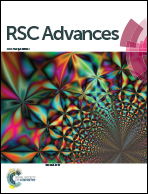Quercetin-loaded solid lipid nanoparticles improve osteoprotective activity in an ovariectomized rat model: a preventive strategy for post-menopausal osteoporosis
Abstract
A formulation of quercetin-based solid lipid nanoparticles (QSLNs) was developed to increase the bioavailability of quercetin, with an aim to evaluate its effects on bone health in comparison to free quercetin (Q). The QSLNs were prepared by emulsification solvent evaporation followed by a cold homogenization method. The QSLNs were spherical when observed under atomic force microscopy, with an average diameter of 172.9 ± 12.65 nm. This formulation was pharmaceutically characterized and then evaluated for osteoprotective activity in ovariectomized (OVx) rats. A single oral dose of QSLNs (5 mg kg−1 d−1) significantly increased the bioavailability compared to free quercetin. The oral administration of QSLNs to ovariectomized rats increased serum quercetin levels by 3.5-fold compared to free quercetin. After 12 weeks of treatment, the bone mineral density of the femur, tibia and lumbar spine L-5 measured by micro-computed tomography (μCT) was restored in the QSLNs group, and was equivalent to the sham control group compared to in the OVx group, but the QSLNs had no effect on adipogenesis and uterine weight in OVx rats. μCT analysis showed that the QSLNs group had an improved trabecular microarchitecture in the distal femoral, proximal tibial and lumbar spine cancellous bones. The developed quercetin formulation based on solid lipid nanoparticles inhibited bone loss in osteopenic rats. Q and QSLNs inhibited the receptor activator of nuclear factor-kappa B ligand (RANKL)-induced osteoclast cells differentiation and the expression of osteoclast-specific genes in in vitro experiments using bone marrow cells treated with RANKL and M-CSF. The data from this study suggest that, overall, QSLNs treatment recovers bone loss (femur, BV/TV; ∼21%, p < 0.01) more so than in the Q treatment group, while both inhibit bone loss without showing any hyperplasic effect on the uteri in OVx rats.


 Please wait while we load your content...
Please wait while we load your content...